In the late 1980s and early 1990s, the nation's capital was in the grip of a crack epidemic. The annual murder rate exceeded four hundred bodies. Even the brother of then-police chief Isaac Fulwood was lost to drug violence. Many of these murders were the result of turf wars between drug dealers.
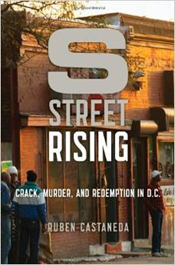 During this time, Ruben Castaneda, a reporter with The Los Angeles Herald Examiner, joined The Washington Post as an overnight police reporter. He thrived on the adrenaline rush of racing to crime scenes he learned about from his police scanner.
During this time, Ruben Castaneda, a reporter with The Los Angeles Herald Examiner, joined The Washington Post as an overnight police reporter. He thrived on the adrenaline rush of racing to crime scenes he learned about from his police scanner.
Unbeknownst to his editors and colleagues, Castaneda was battling alcoholism and crack addiction. The challenges of this double life are chronicled in his new memoir S Street Rising: Crack, Murder and Redemption in D.C. [Bloomsbury Publishing, 2014]. In this tense, gripping, honest memoir Castaneda provides a look at the daily life of a functioning crack addict. At the time, Castaneda was, as he said, "old enough to know better, but young enough to feel invincible."
Castaneda frequented S Street, N.W., one of the busiest open-air crack markets in Washington. He often procured the services of "strawberries," prostitutes who exchanged sex for drugs. The author's descriptions of these episodes spare no detail. If this were a movie, it would receive an "R" rating.
In one of the most enduring and embarrassing images in Washington political history, Mayor Marion Barry was arrested after being caught smoking crack on a surveillance camera. Rumors of an impending indictment against Barry had been circulating around the Post's newsroom for months.
On his way to work, Ruben Castaneda noticed a great deal of police activity at the Vista Hotel. At his editor's direction, he booked a room, which enabled him to roam the hotel and interview witnesses to the night's drama. When he finished his reporting duties, he immediately had one of his strawberries bring crack to his room where he proceeded to get high.
While the author recounts the pleasure he took in getting high, he also tells of situations that could have had awful consequences. When he was flush with cash, Castaneda spent nearly $730, his entire quarterly overtime check, during repeated trips to S Street in a weekend. When he needed a fix, Castaneda went to the apartment of one of his dealers where he was roughed up by two thugs and hit in the head with a small pistol. He was also terrified if a murdered drug dealer he knew would have his phone number on her pager.
These stories read better than any detective novel and leave the reader on edge, and eager to find out how they are resolved.
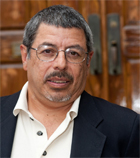 S Street Rising also focuses on several other Washingtonians affected by the crack epidemic. The New Community Church, which was founded by Rev. Jim Dickerson from Arkansas, was right in the middle of the drug trade. Through hard work he built a community. He confronted the local "slingers" (street-level drug dealers). He told them he would not turn them in to the police, but any of them were welcome at the church. The New Community Church flourished through a co-existence with the neighborhood drug dealers.
S Street Rising also focuses on several other Washingtonians affected by the crack epidemic. The New Community Church, which was founded by Rev. Jim Dickerson from Arkansas, was right in the middle of the drug trade. Through hard work he built a community. He confronted the local "slingers" (street-level drug dealers). He told them he would not turn them in to the police, but any of them were welcome at the church. The New Community Church flourished through a co-existence with the neighborhood drug dealers.
Metropolitan Police Department Captain Lou Hennessy, who ran the homicide squad became one of Castaneda's best police sources and implemented innovative investigative techniques to help reverse the high murder rate.
Castaneda writes in an easy fluid style. He is honest, without a hint of self-pity. The reader is immediately drawn in and likes him. This book should be moved to the top of the summer reading list of anyone interested in journalism.
It should also be read by anyone affected by addiction. The redemptive story of the author and the capital city is told with the detachment of someone who went through hell and lived to write about it.
* * *
Kevin P. McVicker is Account Supervisor with Shirley & Banister Public Affairs in Alexandria, Va.


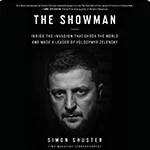 Time correspondent Simon Shuster’s “The Showman” demonstrates how Ukraine president Volodymyr Zelensky’s masterful knowledge of PR tactics and the power of propaganda transformed him from comedian into a respected world leader.
Time correspondent Simon Shuster’s “The Showman” demonstrates how Ukraine president Volodymyr Zelensky’s masterful knowledge of PR tactics and the power of propaganda transformed him from comedian into a respected world leader. Iuliia Mendel, who served as press secretary for Ukraine president Volodymyr Zelensky from 2019 to 2021, will release a book called “The Fight Of Our Lives” in September, published by Simon & Schuster’s One Signal Publishers.
Iuliia Mendel, who served as press secretary for Ukraine president Volodymyr Zelensky from 2019 to 2021, will release a book called “The Fight Of Our Lives” in September, published by Simon & Schuster’s One Signal Publishers.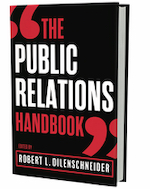 Robert Dilenschneider, former CEO of Hill and Knowlton, is releasing the fifth edition of The Public Relations Handbook on Feb. 15.
Robert Dilenschneider, former CEO of Hill and Knowlton, is releasing the fifth edition of The Public Relations Handbook on Feb. 15. 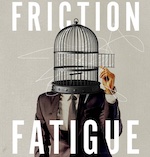 Big Advertising may be down for the count, but the power of marketing lives on. That’s the big takeaway from Paul Dyer’s “Friction Fatigue,” a look at what advertising’s downward spiral means for “future-focused brands."
Big Advertising may be down for the count, but the power of marketing lives on. That’s the big takeaway from Paul Dyer’s “Friction Fatigue,” a look at what advertising’s downward spiral means for “future-focused brands." Sabrina Horn, the high-tech PR guru who sold her Horn Group to Finn Partners in 2015, has published “Make It, Don’t Fake It.”
Sabrina Horn, the high-tech PR guru who sold her Horn Group to Finn Partners in 2015, has published “Make It, Don’t Fake It.”


 Have a comment? Send it to
Have a comment? Send it to 
No comments have been submitted for this story yet.